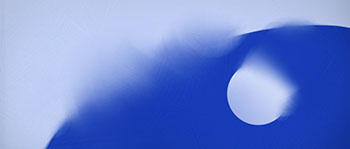Ctrl Paint Custom Brush Design Download
• Software: Photoshop or • Project time: 4-6 hours • Skills: Make hand-drawn elements work digitally, use the Channel mixer, create Hue/Saturation layers In this tutorial, I’ll show you how to bring handmade brush strokes from the workshop into Photoshop. Brush strokes can be used over and over again in different projects by flipping, warping and twisting them. You can use them to add colour and depth to a piece, plus wear and tear for that authentic vintage feel. All this will come together as we create a poster advertising a menswear range. The brush marks we’ll make, used in conjunction with the Channel Mixer, will bring out some great autumnal colours that will make the design pop off the page. Step 01 First, we’re going to create some brush strokes that we’ll use in the advert, so get your brushes and paints out – colour is irrelevant at this stage.

Mess around with different strokes and shapes, doing a few sheets to give yourself plenty of variety. If you have a heater or radiator, dry the sheets thoroughly before scanning. This way you’ll avoid getting any paint on the scanner glass. Free Youtube Mp3 Converter Serial Key. Scan them in at 300dpi or higher. Step 02 Next, go to Image>Adjustments>Threshold and play around with the levels until your brush strokes are looking really nice and solid.
Raw download clone embed report print text 0.80 KB Ctrl+Paint – Custom Brush Design. Ctrl+Paint - Custom Brush Design Size: 351.04 MB. More Ctrl Paint Custom Brush Design Download images. With Photoshop splatter brushes, one can get the splash or splatter designs, which are not easy to create by regular brush work. All you got to do is, download free.
You can use the Lasso tool to isolate individual strokes – it takes longer but you’ll get better results. Go to Select>Color Range and from the drop-down menu click Shadows, then hit OK. All the black in the document will now be selected.
Step 03 Create a new layer with the selection still active. To make sure your colours are reset, press the D key. Then hit Shift+F5 and select Use: Foreground Color. If you switch off your background layer you’ll notice your new layer only has the black brush strokes. If it’s difficult to see, then create a new layer underneath it and fill it white. Step 04 Now we need to give each brush stroke its own layer.
So select the Lasso tool, draw around each stroke and hit Cmd/Ctrl+J – this copies the selection to a new layer of its own. Slate Digital Trigger Drum Replacer Firefox. Once you’ve done this with all the brush strokes, you can delete the original background layer, white layer and brush layer (the one you’ve just been separating). Step 05 The purpose of having this document is to keep it open next to your live document so that you can drag the brushes in, as and when you need them. You might think there are a lot of brushes to scroll through to find the right one, but if you hover over any brush mark and Ctrl/rightclick, you see a list of layers – the one at the top of the list will be the one you’re hovering over. Click on that and the layer is selected. This makes it easy (and efficient) to select and drag. Save the document and start making a library of different brush strokes and marks.
Step 06 We’re going to be creating an autumn/winter fashion advert, so I’ve gone for A3 (CMYK, 420x297mm). If this is for print you’ll want to add some bleed, so press Cmd/Ctrl+R to show your rulers. Drag some guides from the rulers to each edge of the document. Go to Image>Canvas Size and add however much bleed you want – I usually add 5mm to each side.
The canvas will expand and your guides will now be the edge of your document – anything past the guides is bleed area. Step 07 Before I started this project I created a drawing of a friend wearing his Sunday best. It was drawn with the Brush tool on a new layer. To give it some depth, I’m going to fill in certain areas with a halftone pattern. You can get this from scanning the patterns on the inside of old envelopes. For an in-depth look at this technique, check out my ‘’ tutorial.
Step 08 I’ve coloured the different items of clothing on separate layers in black (hit D to make your main colour black). I then attached a Hue/Saturation layer from the Adjustment Layers panel (if you can’t see this, go to Window>Adjustments). Make sure your layer is selected and click the Hue/Saturation icon, then click the bottom left icon to attach the Adjustment layer to your selected layer. Mess around with the sliders until you like the colours.